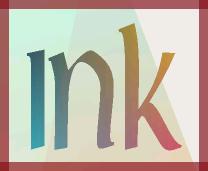|
SCOUG OS/2 For You - October 1998
I have received lots of correspondence as to why I keep pushing the Epson printers and never say anything about Lexmark anymore. Well, it's because I've been waiting for the new Lexmark inkjets to arrive, and they have. The Lexmark Optra 40 Inkjet printer is here, and it is very cool indeed. It is advertised as a 8 page per minute black & white, 4 page per minute (Quick Print mode) color inkjet printer, has it's own processor with 4 Mb RAM standard, expandable to 68 MB using "standard" SIMM's. The printer comes with native OS/2 drivers for Postscript Level 2 and PCL5 emulation. The CD which ships with the printer also has Lexmark's Markvision drivers if you are running a peer to peer or LAN environment, as well as drivers forall those 'other' operating systems. Print quality is described as 600x600 dpi with "1200 Image Quality enhancement". The printer uses two thermal print heads/ two cartridges, with 4 colors standard (CMYK) with a black and a color cartridge, or 6 color printing with the color cartridge and another special color cartridge in lieu of the black one. The printer comes with a standard 150 sheet feeder, and has 75 scalable fonts in both Postscript and PCL modes. It is rated for 3000 sheets/month, and the list price is ca. $470. You can see the printer & review the technical specs at Lexmark's web site: What makes this printer so significant is how it compares to the HP1600CM series, a long time industry workhorse. At work I've been using an HP 1600CM color inkjet printer, which has Postscript drivers, and comes with a network card and an extra 32mb RAM. It cost about $2000 two years ago including the extra memory, and has been a real workhorse. When you consider it works as a Postscript Level 2 color printer, it was - at the time - the cheapest product for the price -- real color lasers being in the $5000 range and with not much better output. The HP uses 4 separate large capacity ink cartridges and has performed without a hitch. On the other hand, the OS/2 support is nonexistent, and the HP drivers leave alot to be desired under all operating systems, particularly when working with EPS (encapsulated postscript) images. It also cost too much to be a sensible solution for home printing. At the same time, the Epson photo printers, and the 600 series for that matter, are not for everyday printing, unless you have a lot of time. And I mean so much time to print that it makes the world wide web on your old 14.4 modem look pretty snappy. While I liked the print quality of the Lexmark 5700 Color Printer, from what friends admitted, it too is a slow puppy. So until now, my solution has been to use an Epson for the graphics, and to try and find a laser for black & white printing. Of course I could never follow my own advice... I seem to keep buying color inkjets for this column, and never have the money for a real laser with OS/2 support, like the Optra series. Next month I'll continue this review with more of a workout to see how the 'published specs' vary with the real world. They do, of course, just as all published specs are eternally optimistic. But the short answer is, I love this printer -- it does everything that the 1600CM did for about 1/3 the price. It is also now my default printer at home and I don't feel deprived in not having a laser. One caveat. Do put extra memory in, and don't buy Lexmark's. Any color postscript driver will eat memory on a complex color image, and you will want to put in at least a 32MB simm. A Lexmark 32 MB SIMM will cost you about as much as the printer -- that's right, almost $500. And even tho' they say the SIMM's are standard, they aren't quite. 50NS instead of 60NS for one, and also most standard SIMMS are too high to let you put the printer's cover back on after installation. Don't despair, call J.D. at ROMCO in Eagle Rock (213-254-6060) they got me the right 3rd party 32MB SIMM for $70, along with the printer for $457. Good folks, and with what you save on the SIMM you can afford to drive there or pay for shipping. See you next month for a more detailed look at this Lexmark printer.
By day, Tony Butka is a bureaucrat for Los Angeles County. In his other life he lives in a loft surrounded by computers, printers, and a host of vinyl records.
P.O. Box 26904 Santa Ana, CA 92799-6904, USA Copyright 1998 the Southern California OS/2 User Group. ALL RIGHTS RESERVED.
SCOUG is a trademark of the Southern California OS/2 User Group.
|









